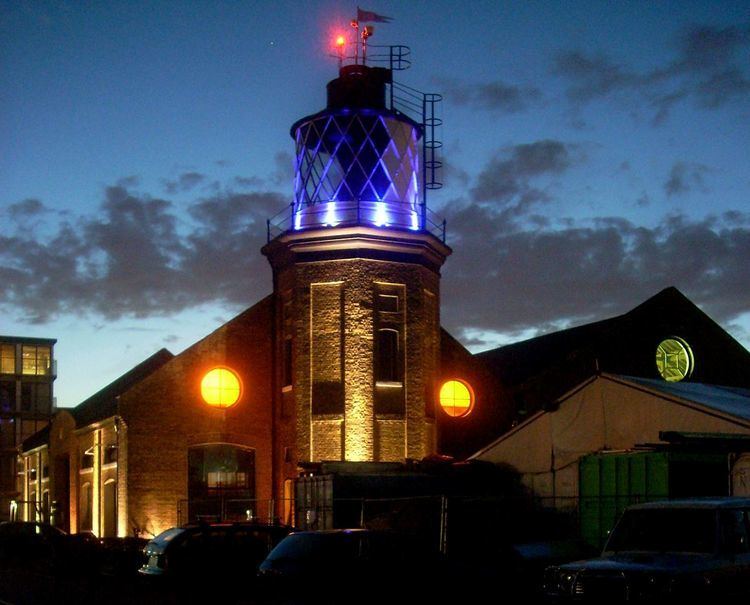Deactivated 1988 ARLHS number ENG-275 Phone +44 20 7515 2557 | Construction brick tower Opened 1863 Year first constructed 1863 | |
 | ||
Location LeamouthTower HamletsEngland Tower shape hexagonal prism tower with balcony and lantern attached to 1-storey depot building Markings / pattern unpainted tower, black lantern Hours Open today · 7AM–9PMSaturday7AM–9PMSunday7AM–9PMMonday7AM–9PMTuesday7AM–9PMWednesday7AM–9PMThursday7AM–9PMFriday7AM–9PMSuggest an edit Similar East India DLR station, Trinity House, Museum of London Docklands, Millennium Dome, River Lea Profiles | ||
Hidden depths trinity buoy wharf
Trinity Buoy Wharf, in the London Borough of Tower Hamlets, is the site of London's only lighthouse, by the confluence of the River Thames and Bow Creek, at Leamouth. The lighthouse no longer functions, and is the home of various art projects such as Longplayer. It is sometimes known as Bow Creek Lighthouse.
Contents
- Hidden depths trinity buoy wharf
- Christmas wedding video trinity buoy wharf and chelsea via thames
- History
- Late 20th century and on
- References
Christmas wedding video trinity buoy wharf and chelsea via thames
History
In 1803, the site came to be used by The Elder Brethren of Trinity House which is now known as Corporation of Trinity House, and the seawall here was reconstructed in 1822, built by George Mundy of Old Ford. The site was used as a maintenance depot, and storage facility for the many buoys that aided navigation on the Thames; and the wharf for docking and repair of lightships.
The original lighthouse was built by the engineer of Trinity House, James Walker, in 1852, and was demolished in the late 1920s. The surviving lighthouse was built in 1864-6 by James Douglass for Trinity House. It was used for lighting trials for Trinity House's lights around England & Wales. Michael Faraday also carried out experiments there. The pair of lighthouses were used for training prospective lighthouse keepers.
Late 20th century and on
In December 1988, the Corporation of Trinity House closed the wharf, and the area was acquired by the London Docklands Development Corporation. In 1998, Urban Space Holdings Ltd took control of the site on a long lease. The site has been, and continues to be, developed as "a centre for the arts and cultural activities". Enhancements include studio space (including unusual architecture based on used shipping containers) and exhibition space.
Urban Space Holdings have used the area to develop 'Container City' in 2001, a studio and office complex made from recycled sea shipping containers. The original project was made from 80% recycled material. "Container City 1" took 5 months to complete, taking 4 days to install. The Container City project proved very popular and in 2002 "Container City 2" was completed delivering a further 22 studios across 5 floors in with a brightly coloured ziggurat design. A further extension to the Container City Complex was the "Riverside Building" located next to the Thames facing The O2 dome. This was yet another architectural design providing an additional 22 studio spaces.
On 30 November 2005, the University of East London opened Fine Art studios at the wharf, and on 25 September 2009 the University of East London opened two dance studios at the Institute of Performing Arts Development in The Chainstore at Trinity Buoy Wharf.
Faraday School, a not-for-profit primary school run by the New Model School Company Limited, opened in September 2009.
Trinity Buoy Wharf is the home of Thames Clippers who have offices and base all their boats on the pier there.
In April 2013 the ex Cory Environmental Thames Lighterage tug 'Swiftstone' moved to Trinity Buoy Wharf from Greenwich and the trusts volunteers began a full restoration of the vessel which can be seen underway at the year Thames Barge Driving event. (thames.org.uk)
